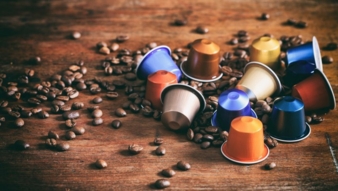16.10.24 – Environmentally friendly nonwovens
Bioplastics Nonwoven: benefits and issues
The Nonwovens industry has been developed around disposable products, which are increasingly singled out for their environmental impact.
Bioplastics Nonwoven: benefits and issues
Although there are solutions based on bio-based fibres such as viscose, cellulose and flax, among others, a number of applications require other raw materials. These alternatives include bioplastics. Subrenat, a leader in the creation and manufacture of technical textiles based in France, has been developing, converting and holding inventory of Spunbonded 100% PLA in white or colour for 15 years. Thanks to this track record, the company has had the opportunity to discover a variety of applications where users are looking for a nonwoven fabric (for its mechanical strength, permeability, softness, weldability,...) and can no longer be satisfied with products made from fossil raw materials (such as polyester or polypropylene). The customer requirements have led Subrenat to work with lots of partners of raw materials and nonwovens to meet their specifications.
The benefits of bioplastics
Subrenat has evaluated bioplastics for the different nonwoven technologies. Bioplastic nonwovens are interesting where there is a need for strength in dry and wet condition, for weldability (either thermal, ultrasonic or high frequency), for liquid and air permeability. In addition to these properties, bioplastics are interesting in the following contexts:
To allow for composting at the end of the final product life, without having to separate the various traditional plastic components (example: Spunbonded PLA or needlepunch PLA for mulching sails and filtering organic liquids)
To meet the regulatory requirement for certain consumer products asking for domestic compost (Ok Home Compost), keeping basic heat-sealing properties, resistance to wet environments and certified direct food contact.
To speed up industrial composting as some bioplastics require more than one composting cycle (for example, the ongoing development of Spunbonded PBS or additivities PLA for coffee capsules).
To meet the growing demand for eco-designed or sustainable development-oriented products (example: Spunbonded or Spunlace PLA, Spunbonded PBAT for customized industrial packaging)
To offer components that are either bio-based and heat-sealable (example: Spunbonded PLA or Bio PE/PLA for baby nappies)
Constraints of production processes
To answer these requirements, Subrenat has been working with partners to overcome the production constraints of nonwovens and filament spinning. Apart from PLA, the characteristics of bioplastics make them difficult to use during production, because:
Nonwoven processes (or fibre production processes), require a high viscosity index to allow proper spinning
Spunbonded process require temperatures in excess of 200°, making it difficult to insert enzymes, for example
High temperatures for a long period of time in machines make over-curing of the product a clear risk.
While Subrenat has already developed PLA and PBAT nonwovens, the team of engineers keeps working on new polymers (PHA, PBS/PBSA, additives) and new applications.


